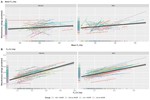About me
I am an Associate Professor and Researcher at EvoCo: Human Behaviour and Evolution Lab, in the Faculty of Psychology, at the Universidad El Bosque in Bogota, Colombia, and the leader of the CODEC: Cognitive and Behavioural Sciences research group (classified as A1). I am also a founding and board member of the Latin American Association for Human Behavioral and Evolutionary Sciences (LAAHBES), and serve as recommender (equivalent to journal Associate Editor) for Peer Community In Registered Reports.
My research primarily focuses on human vocal communication, mate choice, and musicality, as well as bioacoustics, psychoacoustics, and hormonal effects on human behaviour. I have published some of the first articles demonstrating within-individual changes in voice pitch in response to the social status of the listener, as well as the significant effects of voice modulation on listeners in courtship contexts. I am passionate about quantitative methods and programming, and advocate for reproducibility and open science.

Investigación Abierta (YouTube channel)
Investigación Abierta ["Open Research"] is a YouTube channel in Spanish where I sometimes post videos and tutorials related to quantitative research methods and open science, as well as useful open source software. You can find information in English about the channel and video series here.
Academic journey

Interests
- Mate choice
- Vocal communication
- Voice modulation
- Musicality
- Bioacoustics
- Psychoacoustics
- Hormones
- Statistics
- programming
Education
PhD, Psychology, School of Natural Sciences, 2014
University of Stirling (Stirling, UK)
MSc in Evolutionary Psychology, 2009
University of Liverpool (Liverpool, UK)
BA in Music Pedagogy, 2006
Universidad Pedagógica Nacional (Bogota, Colombia)
Skills
R
Statistics
Experimental Design
Acoustic Analysis
Face Analysis
Teaching
Featured Publications
See all publications
Investigación Abierta
YouTube Channel (In Spanish)
Contact
- jleongomez@unbosque.edu.co
- (+57) 601-6489000 Ext. 1901
- EvoCo: Laboratorio de Evolución y Comportamiento Humano, Facultad de Psicología, Universidad El Bosque, Bogotá, DC 110121
- Book an appointment (for Universidad El Bosque faculty and students)
- @jdleongomez@mastodon.social
- @JDLeongomez











